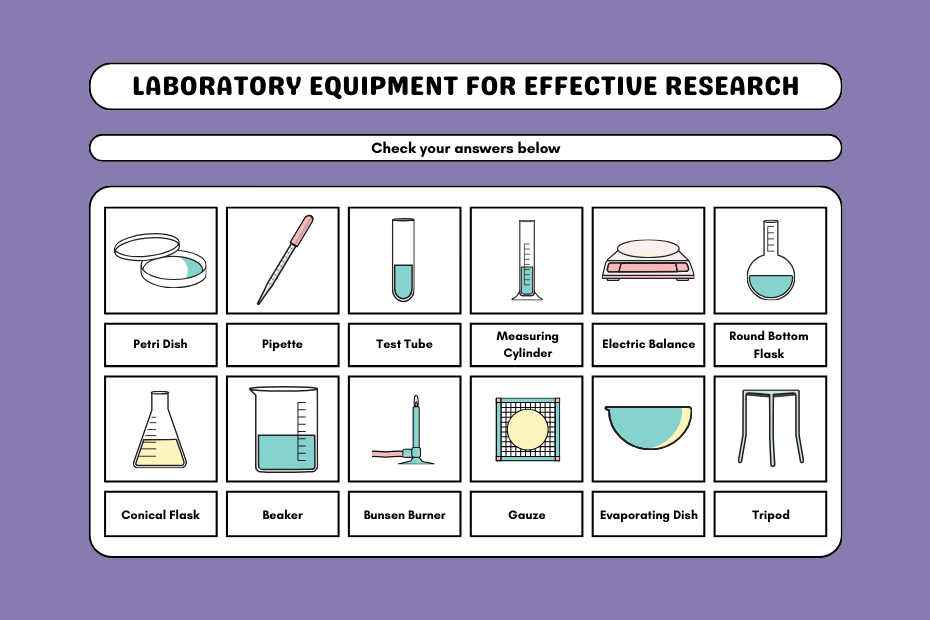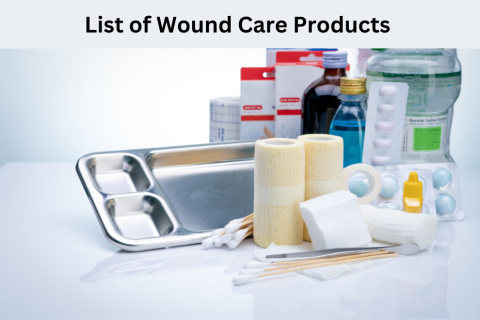Homecare Made Easy: Choosing t...
Apr 18, 2024Laboratory Equipment for Effective Research: Top 10 Tools You Need

In many scientific fields, lab equipment is essential for enabling successful research. The accurate measurements, observations, and analyses that are necessary for scientific research are made easier by these types of equipment. Researcher efficiency can be increased by using high-quality, well-maintained equipment to capture precise data, reduce errors, and maximize precision. Furthermore, access to specialist equipment that may not be easily accessible or required for some experiments and analysis can be essential for furthering research in specific fields.
In this blog, we will discuss the top 10 laboratory supplies that are necessary for successful research.
Top 10 Useful Lab Equipment for Successful Research
1. Microscope
To observe and analyze objects that are too small to be seen with the naked eye, researchers use microscopes. These laboratory supplies reveal details that are critical for understanding the structure, function, and behavior of cells, tissues, and materials.
There are many different kinds of microscopes, each with a particular set of capabilities and uses, such as optical microscopes, electron microscopes, and scanning probe microscopes.
Researchers can examine the characteristics of materials at the nanoscale, identify and classify diseases, see cellular and molecular structures, and perform a variety of other tasks with the aid of microscopes. Numerous scientific and medical breakthroughs have been made possible through microscopy, which is still an essential technique for improving our understanding of the environment.
Get the best microscopes and accessories for microscopes from
2. Spectrophotometers
Spectrophotometers are lab supplies that measure how much light a sample transmits or absorbs as a function of wavelength. Researchers can learn more about a sample's characteristics, such as its composition, structure, and concentration, by examining how light interacts with it.
In a scientific study, spectrophotometry has a wide range of uses. For instance, spectrophotometers can be used to assess the purity of a product, measure the concentration of a specific component in a sample, or track the development of a chemical reaction.
Spectrophotometry is also widely used in disciplines like biology, where it can be employed to calculate the concentration of protein, RNA, or DNA in a material.
3. Pipette
A pipette is lab equipment used to deliver exact liquid amounts. Many laboratory activities, including measuring reagents and samples, making solutions, and carrying out cell and tissue cultures, depend on accurate and exact pipetting.
Making sure the proper volume of liquid is supplied to an experiment with a pipette is essential for obtaining precise and repeatable findings. There are several different varieties of pipettes, and they may dispense liquid in varying amounts, ranging from microliters to milliliters.
Some of them can dispense a variety of volumes, and they can be either manual or electronic.
4. Centrifuge
In many various forms of study, centrifuges can be very beneficial, especially in the disciplines of biology, chemistry, and biochemistry. A centrifuge is a laboratory tool that separates the components of a sample according to their density by applying centrifugal force.
When a sample is spun quickly, the less dense components stay close to the top while the denser portions are pushed to the bottom of the tube or well.
They can aid researchers in better understanding the fundamental characteristics and functions of those components and how they relate to diverse scientific problems by enabling the separation and isolation of particular components of a sample.
5. Hotplate/stirrers
Researchers can heat and mix solutions with hotplates/stirrers, which is helpful for many experimental techniques. For instance, a hotplate/stirrer can maintain a constant temperature while also stirring the solution to ensure homogeneity, which is necessary for some chemical processes to occur at the correct rate.
Hotplates/stirrers can also be utilized for several additional tasks, including drying samples, evaporating solvents, and preparing media. They are frequently employed in the processing of biological samples, including cell cultures and protein solutions, where delicate mixing is necessary to prevent sample damage.
6. Incubators
By offering a regulated and ideal environment for growing and sustaining living organisms or cells, such as bacteria, fungi, and animal or plant cells, incubators can play a key role in the outcome of laboratory research.
For organisms to develop and reproduce, incubators can control the levels of temperature, humidity, and carbon dioxide. Additionally, they can shield individual cultures from other cultures and stop cross-contamination.
Incubators can also be used to establish particular experimental settings, such as hypoxic or hyperoxic environments, which may be required for some sort of study.
7. Lab Coats
For scientists, researchers, and medical professionals who operate in laboratories, lab coats are a necessary article of lab safety supply. The purpose of lab coats is to shield the wearer's skin and clothing from potential hazards that could arise during tests or procedures, such as accidental spills and splashes.
Additionally, by serving as a barrier between the user and the research environment, lab coats can assist avoid cross-contamination. This is crucial in sterile settings like hospitals and labs.
8. Safety Glasses/Goggles
By protecting the eyes from potential threats during the experiment or laboratory activity, safety glasses or goggles can play a crucial part in guaranteeing successful research.
There may be a danger of eye injury in many research settings due to exposure to hazardous chemicals, biological agents, radiation, or flying debris. By putting a barrier between the eyes and the dangerous materials, safety glasses or goggles can help avoid eye injuries.
9. Gloves
Gloves act as a protective barrier between the researcher's hands and the objects they are handling. This shield shields the sample from contamination and safeguards the researcher from dangerous contaminants.
By preventing the movement of chemicals from one sample to another, gloves can assist in maintaining the accuracy of research.
10. Face Shields
Face shields are mainly made to guard the wearer's face from splashes, sprays, and liquid droplets like blood, saliva, or other bodily fluids. They are frequently utilized in hospitals, science labs, and other facilities where there is a possibility of exposure to such fluids.
They might also be helpful when researchers need to collaborate closely but are unable to maintain physical distance from one another.
In the End
It's crucial to remember that good research cannot always be assured by effective lab equipment. The ability to design and carry out well-planned experiments, as well as the knowledge and skills of the researchers employing the equipment, are all crucial components of a successful research project.
High-quality research must also be conducted with sufficient financing and resources, including facilities, employees, supplies, and equipment in addition to equipment









